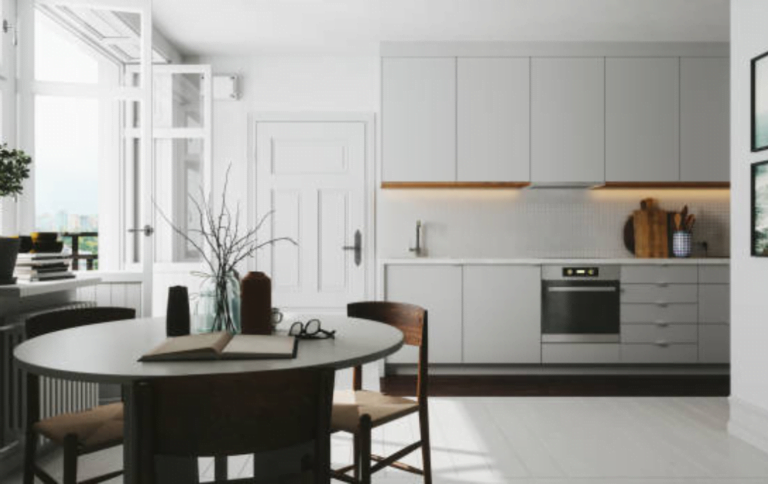Proper Joinery Techniques for Dresser Craftsmanship on Facebook Marketplace

In furniture shopping on platforms like Facebook Marketplace, the quest for the perfect dresser involves more than just aesthetic appeal. Discerning buyers understand the importance of craftsmanship and construction techniques that contribute to a dresser’s durability and longevity. In this comprehensive guide, we will delve into the significance of proper joinery techniques, providing you with the knowledge needed to evaluate the quality of dressers on Facebook Marketplace.
Understanding the Importance of Joinery
Joinery is the method by which different parts of a dresser are connected or joined together. High-quality joinery is a hallmark of craftsmanship, contributing not only to the structural integrity of the dresser but also to its overall aesthetic appeal. Proper joinery techniques enhance the durability of the piece, ensuring that it can withstand the test of time and the rigors of everyday use.
1. Dovetail Joints: A Time-Honored Tradition
Dovetail joints are widely regarded as a sign of superior craftsmanship in furniture making. This intricate interlocking joint resembles the shape of a dove’s tail, providing both strength and visual appeal. Dovetail joints are often found in drawers, and their presence suggests that the dresser has been crafted with attention to detail.
Inspect the corners of the dresser drawers for dovetail joints. A well-made dovetail joint demonstrates a level of skill and precision that goes beyond simple construction methods. The tight interlocking of the joints adds both aesthetic value and structural integrity to the dresser, making it more resistant to wear and tear.
2. Mortise-and-Tenon Joints: Sturdy and Time-Tested
Mortise-and-tenon joints are another traditional woodworking technique that speaks to the quality of dresser construction. This method involves creating a hole (mortise) in one piece of wood and a corresponding projection (tenon) on another piece, which fits into the mortise. The joint is then secured, typically with glue or wooden pegs.
When examining a dresser on Facebook Marketplace, pay attention to areas where different parts of the dresser meet, such as where the legs attach to the body or where the frame connects to the top. Mortise-and-tenon joints provide a sturdy connection, ensuring that the dresser remains stable and robust.
3. Butt Joints: A Sign of Lower-Quality Construction
In contrast to dovetail and mortise-and-tenon joints, butt joints are a simpler and less sophisticated form of joinery. In a butt joint, two pieces of wood are joined at their ends, often with the help of glue or screws. While butt joints can be suitable for certain applications, they are generally considered less robust and durable than dovetail or mortise-and-tenon joints.
When inspecting a dresser, particularly in areas where pieces of wood meet at right angles, look for signs of butt joints. While not necessarily a deal-breaker, a prevalence of butt joints may indicate lower-quality construction, and it’s essential to consider this factor when assessing the overall value and durability of the dresser.
4. Tongue-and-Groove Joints: Stability in Drawer Construction
Tongue-and-groove joints are commonly used in drawer construction to enhance stability and prevent warping. In this method, a protruding tongue on one piece of wood fits into a corresponding groove on another piece, creating a strong connection. This type of joinery is particularly effective in ensuring that dresser drawers remain sturdy and functional over time.
Examine the edges of the dresser drawers for signs of tongue-and-groove joints. This construction method not only contributes to the overall solidity of the dresser but also enhances the smooth operation of drawers, preventing issues such as sticking or misalignment.
Assessing Joinery Techniques in Specific Areas
1. Legs and Frame Connection
The connection between the dresser legs and the frame is a critical area to inspect for proper joinery. Look for mortise-and-tenon joints or other well-constructed connections that ensure the legs provide adequate support to the dresser structure. A solid foundation in the dresser’s frame contributes to its overall stability.
2. Drawer Corners and Slides
Dresser drawers undergo frequent use, making the joints in this area crucial for long-term functionality. Dovetail joints in the corners of drawers indicate a commitment to craftsmanship. Additionally, inspect the drawer slides – metal ball-bearing slides are preferred for their durability and smooth operation.
3. Back Panel Joinery
While the back panel of a dresser may not be as visible, it still plays a role in the overall stability of the piece. Look for solid joinery, such as dovetail joints or tongue-and-groove connections, in the dresser’s back panel. This ensures that the dresser maintains its structural integrity, even in less visible areas.
Buying Considerations on Facebook Marketplace
1. Ask About Joinery in Communication with the Seller
When communicating with the seller on Facebook Marketplace, don’t hesitate to ask about the joinery techniques used in the dresser’s construction. A reputable seller who takes pride in their craftsmanship will be forthcoming with this information and may even provide additional details about the dresser’s construction methods.
2. Inspect in Person When Possible
Whenever feasible, arrange to inspect the dresser in person before finalizing the purchase. This allows you to closely examine the joinery, feel the quality of the construction, and assess the dresser’s overall condition. In-person inspection provides a tactile experience that online photos may not fully capture.
3. Consider Brand Reputation
Certain furniture brands are renowned for their commitment to quality craftsmanship. If the dresser has a recognizable brand, research its reputation for using proper joinery techniques. A well-regarded brand is more likely to adhere to high standards of construction.
4. Understand the Impact on Price
Dressers with superior joinery techniques often come with a higher price tag. While this may be an investment, it is a reflection of the craftsmanship and durability you can expect. Consider your budget and the value you place on long-lasting furniture when evaluating the dresser’s price.
Conclusion
When buying a dresser on Facebook Marketplace, a discerning eye for proper joinery techniques can make the difference between a piece that stands the test of time and one that may show signs of wear sooner than expected. Understanding the significance of dovetail joints, mortise-and-tenon joints, and other construction methods empowers you as a buyer to make informed decisions. As you navigate the world of dressers on Facebook Marketplace, let the craftsmanship of joinery be a guiding factor in selecting a piece that not only meets your aesthetic preferences but also stands as a testament to enduring quality.







